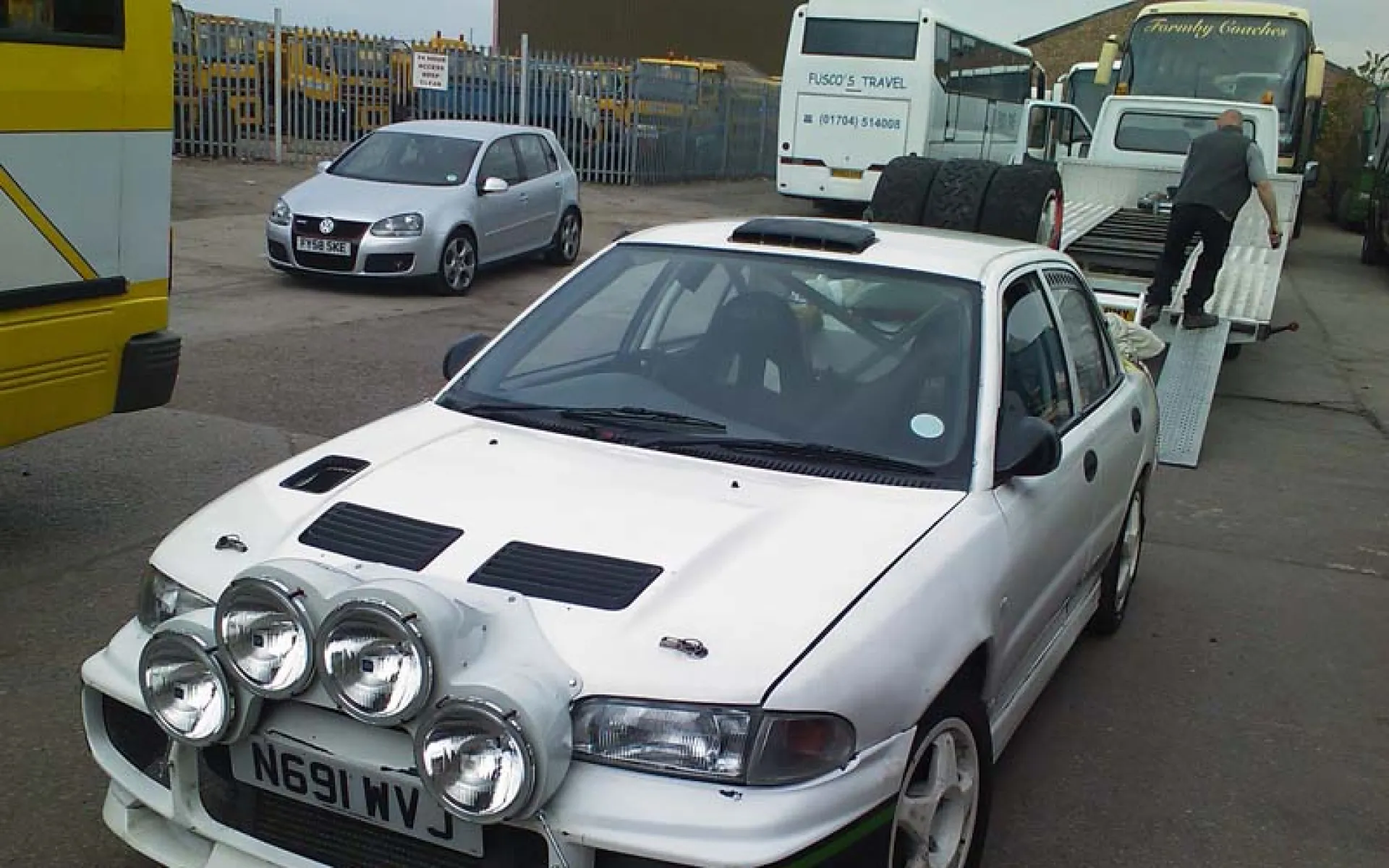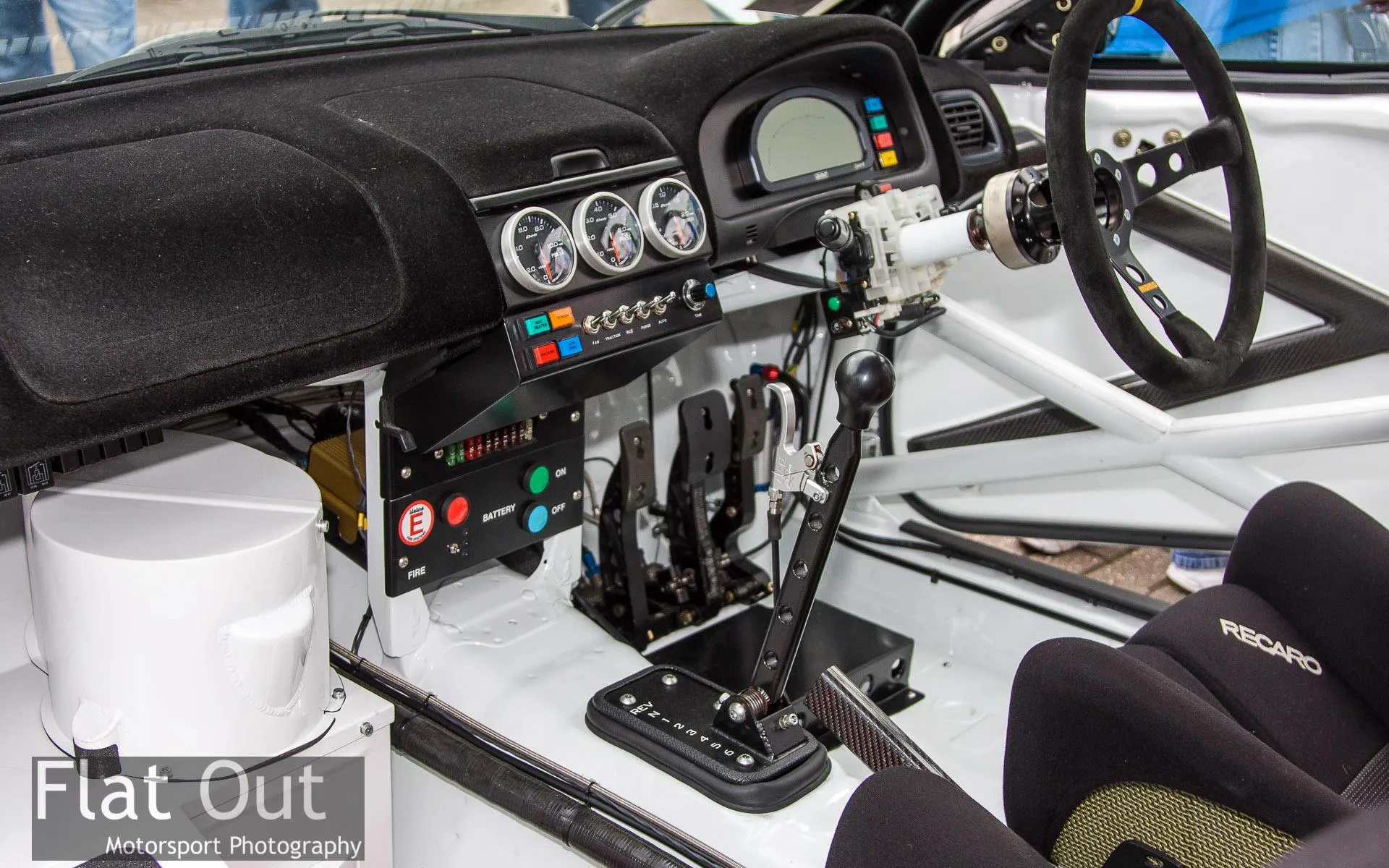Search
Guide to rally car classes and second hand buying tips
Here we present an article detailing the different classes in rally cars and shed light on the phrases frequently used in rally car adverts.
Guide to Rally Car Classes
WRC
In circulation from 1997 onwards, a WRC is typically a 2000cc, turbo charged 4WD car based on an existing production car shell/silhouette. However, that's where the similarity pretty much ends. Active differentials (front, centre and rear), aerodynamic modifications, bespoke engine and components (with the addition of a 34mm restrictor), typically, power is limited through the restrictor to around 330bhp, however, torque will be anywhere from 600ft/lbs and above. A minimum weight of 1230kg is imposed.
WRC's for sale will all be ex-works, some may have changed from the factory components (thus devaluing the car slightly) but most retain the factory support. A WRC represents the pinnacle of rallying technology with a purchase and running cost to reflect this.
Group A
Similarly to Group N, Group A was based on modifed road cars but with a much higher degree of flexibility on the rules. Engines regulations are a lot looser, resulting in much higher torque available (through the internal changes allowed and the fact the larger 34mm restrictor can be used). Gearboxes are free, shocks/corners free and uprated hub/brake/discs combination all allowing a higher performance level than that seen in Group N.
Again, similarly to Group N, there is a very wide range of Group A cars, from ex-works cars with the best of everything, to a Group N car with a 34mm restrictor masquerading as a Group A car. A wily buyer needs to delve deeply into the specification to gather the true worth of the car before comitting.
Group B
Group B was a set of rules created in 1982 by the FIA for rallying. The result was some of the quickest and most powerful cars built to date before it was eventually banned in 1986. Group B ranged from 3000cc to 4000cc naturally aspirated and 1428cc to 2857cc turbo/super charged. With minimum weights from 820kg to 1100kg.
Group B cars are still competed today in various genres and offer both amazing performance and awe to the driver and spectator. All proper Group B cars are ex-works cars and command very hefty price tags given the history associated with them.
Group N
Group N is based upon 'showroom' cars modified for rallying with the set of regulations laid down by the FIA. Typically this is 4WD, turbo-charged 2litre in format. The range of modifications allowed has changed over the years and now encompases - blue printing of engines, free ECU, removal of trim, free springs and shocks, dogboxes, dash and other minor items. However, restrictors are required on the turbos, typically 32mm although some series allow 34mm.
Group N cars have a very wide range of availability second hand. From the early Imprezas and Evo 1/2/3s, to the current modern Evo and Imprezas, the more modern machinery delivering performance and times more akin to that of the Group A cars of old.
Super 2000/S2000
The S2000 formula was introduced by the FIA to reduce the costs of running in the World Rally Championship. The S2000s cars utilise a common control gearbox and driveline made by Sadev, with Xtrac and Ricardo gearboxes soon to come to market.
Currently Fiat, Ford, Peugeot, Skoda, Toyota, Volkswagen, MG, and Proton have S2000 rally cars to market. As relatively new, skant examples are currently available outside of works contracts with the cars officially competing side-by-side in the WRC from 2009 (although not scoring points until 2010).
The cars are 4WD, naturally aspirated, have a maximum of 280bhp, contain no electronic driver aids and should be Euro168,000 new.
Super 1600/S1600
The S1600 forumula is effectively the JWRC style of car. The FIA created this class in 2000 and it's still currently running. The cars are production based homologated vehicles with a maximum engine size of 1640cc. Typically these are highly modified cars, featuring sequential gearboxes, highly specifically tuned engines (max power of 230bhp), two-wheel drive and a minimum weight of 980kg (depending on valves per cylinder).
Citroen, Suzuki, Renault, Fiat, Ford and Volkswagen are the works based cars. As the majority of cars are works based, they still command good value on the market and provide a very competitive entry for young drivers into the WRC calender.
Production
Production groups in rallying have very strict controls on what can be done to deviate the car from the original showroom versions. Aside from the normal safety enhancements (cage/harnesses/extinguishers/cutoffs) most regulations allow air filter changes, shocks, brake pads and lightening of the interior/no longer required accessories.
Road Rally
Road rally cars are generally slightly modified production road cars. The addition of a cage (bolt in typically), some codriver accessories, allowed lightening of parts, perhaps uprated shocks and the addition of some extra lights.
Common rally car phrases used in adverts
'clubman'
This term is sometimes used to differentiate a car from being a 'works' ie. factory car. Typically clubman cars utilise slightly cheaper (although still quality) components to try to attain a similar performance level through more cost-effective means as the works cars.
'works' or 'ex-works'
Refers to a car that was 'factory' built - ie. built by the factory affilliated motorsport arm of a company, e.g. Subaru - Prodrive, Ford - MSport. Works cars typically utilise the best components available at the time of build, some of which may be exclusive to works cars. Typically this will mean they will have a performance edge over publically available items with the associated cost and source dilemnas.
log book
Rally cars require a valid RACMSA logbook to compete on MSA events in the UK. This is seperate from the DVLA issue V5 'log book'.
Good questions to ask before buying a rally car
is it log booked?
Key to any competition rally car in the UK, it must have an RACMSA logbook or it cannot compete. You sometimes see adverts for 'rally cars' that are either unfinished projects or modified road cars, without a valid RACMSA issued logbook, these car cannot compete until they are approved.
what mileages does the car have?
Rally car components require frequent rebuilds and refreshes, moreso the higher the specification. As such, it is good practice to find out how many miles (or hours, or events) each component has undertaken - engine, gearbox, diff(s), shocks.
who was the original build/creator?
Build quality can vary greatly depending if the car was home built, factory built or specialist, so finding out the original builder of the car and associated history is of huge benefit in assessing the value of the car.
what is the car's competition history?
The recent competition history of the car can be a good indication of it's reliability and capability. As ever, a lot will be down to the driver - a quick driver can mask a bad car to some extent, likewise, a poor driver may cast a shadow over a quick car, however, this information helps to further assess the car and it's competitiveness.
is the car supplied with a spares package?
Is a spares package offered with the car? Depending on the format and marque, spares may be essential. From extra sets of wheels, discs and pads, through to complete boxes and diffs, a decent spares package will ensure you are good to go from the moment you purchase the car.
More Blog Articles
Web development by Caribbean New Media.


